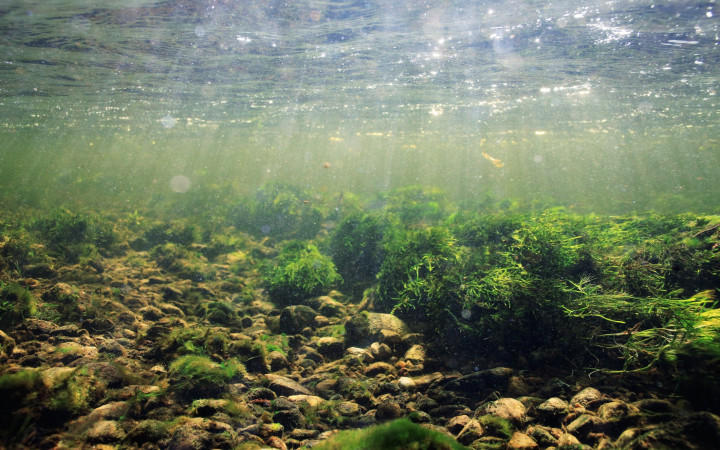Today’s Wonder of the Day was inspired by Madi from Waukesha, WI. Madi Wonders, “What are Marimo Moss Balls?” Thanks for WONDERing with us, Madi!
Have you ever visited a lake on a warm summer day? Maybe you went fishing in Crater Lake or Lake Baikal. You might have explored the many islands of the Great Lakes. Or perhaps you just relaxed on a shore, watching the smooth surface of a lake and WONDERing what might lurk below.
Indeed, the lakes of our world make fantastic habitats. Each one might contain any number of plants and animals. Some are full of life, while others are void of it. Today’s Wonder of the Day is about an organism that remains in just a few lakes of the world. What are we talking about? Marimo moss balls!
That name is a bit of a misnomer. Marimo moss balls aren’t actually moss at all. They’re actually algae. The algae grow long hair-like filaments. As they roll around at the bottoms of freshwater lakes, these filaments tangle together. That’s how they grow to form a sphere that does look a bit like moss. The largest ones can be over a foot in diameter!
Have you ever seen marimo moss balls in person? If so, you may know that they tend to float during the day and sink at night. Experts believe they do so for two reasons. The first is connected to photosynthesis—they float to the surface during the day to take in sunlight. The second reason is their circadian rhythms. The organisms rise and sink again according to their own internal clock.
Marimo moss balls are also called lake balls. They were once found in many places across the globe. They’ve been seen in Iceland, Siberia, Australia, Ukraine, Ireland, and Japan, just to name a few. However, experts have noticed something strange in the last few decades. The lake balls have started to disappear.
In the last 30 years, marimo moss balls have only been seen in about 50 percent of their known habitats. Today, they’re only common in two places—Lake Mývatn in Iceland and Lake Akan in Japan. Why the sharp decline? Experts blame pollution, pesticides, and climate change for putting lake balls on the endangered species list.
The lake balls have also been affected by tourism and the aquarium trade. Many people like to keep marimo moss balls as pets, leading companies to harvest them from freshwater lakes. Additionally, tourists have been known to take the lake balls as souvenirs. This is so widespread that it caught the attention of the Japanese government. In 1977, it asked for anyone who had taken a lake ball from Lake Akan to return it. This was just one attempt to save the marimo population.
In Japan, the indigenous Ainu people have their own way of helping the marimo. They hold a festival each year at Lake Akan called Marimo Matsuri. Its purpose is to appreciate Mother Nature and protect the marimo moss balls. At the festival, people can learn about the lake balls and see special rituals that honor them. They also learn about Ainu culture through folk songs and dance performances.
Would you like to see the marimo moss balls at Lake Akan? Would you like to know more about the Ainu people? Maybe you can attend Marimo Matsuri yourself one day! It’s a great place to learn more and celebrate nature.
Standards: NGSS.LS1.C, NGSS.2.C, NGSS.4.C, CCRA.L.3, CCRA.L.6, CCRA.R.1, CCRA.R.2, CCRA.R.4, CCRA.R.10, CCRA.SL.1, CCRA.SL.2, CCRA.W.2, CCRA.W.7, CCRA.W.6, CCRA.W.9, CCRA.L.1, CCRA.L.2




